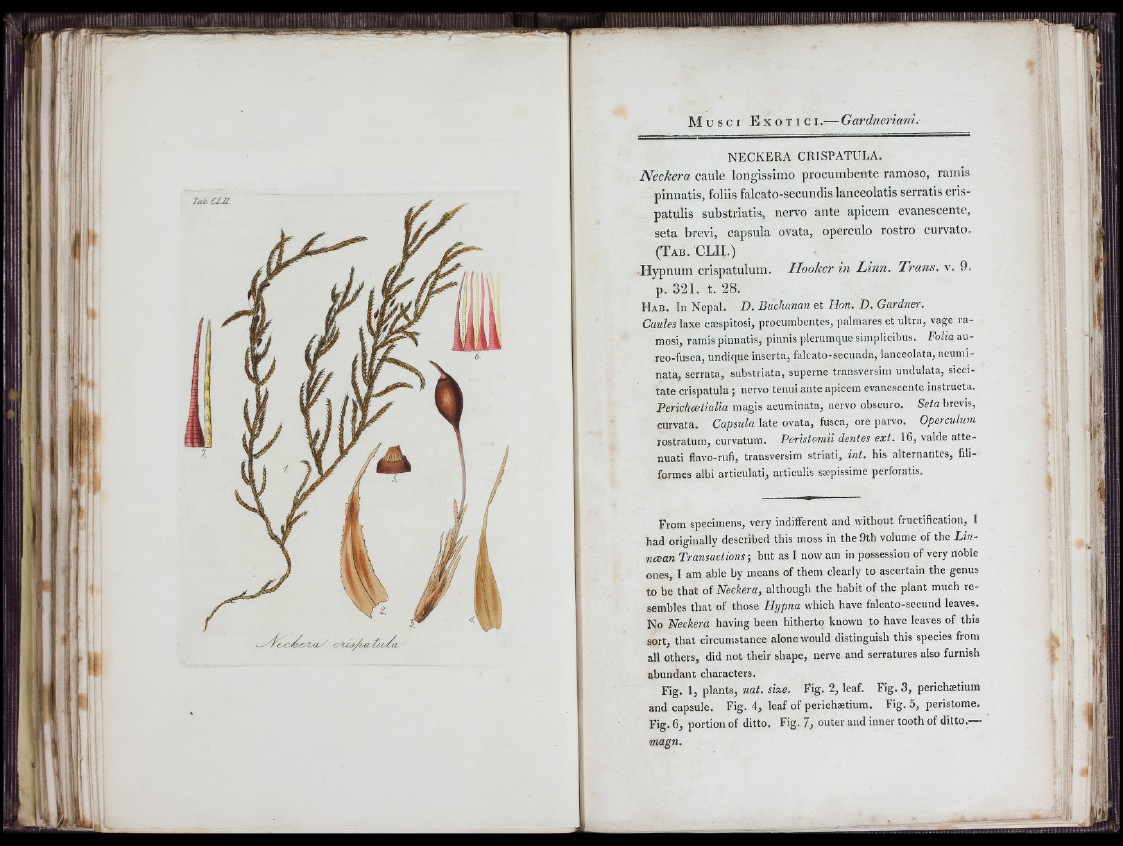
ì
V f
if i
Taò.CLJl
c ^ u fic e ñ .ty /a .
NECKERA CRISPATURA.
Neckera caule longissimo procumbente ramoso, ramis
pinnatis, foliis falcato-secundis lanceolatis serratis cris-
patulis substriatis, nervo ante apicem evanescente,
seta brevi, capsula ovata, operculo rostro curvato.
(T a b . C L I I .)
Hypnum crispatulum. Hooker in Linn. Trans, v. 9.
p. 321. t. 28.
H a b . In N ep a l. F . Buchanan et Hon. D. Gardner.
Caw/ei laxe cæspitosi, procumbentes, palmares et ultra, vage la -
mosi, ramis pinnatis, pinnis plerumque simplicibus. Folia au-
reo-fusca, undique inserta, falcato-secunda, lanceolata, acuminata,
serrata, substriata, superne transversim undulata, siccitate
crispatula ; nervo tenui ante apicem evanescente instructa.
Perichætialia magis acuminata, nervo obscuro. Seta brevis,
curvata. Capsula late ovata, fusca, ore parvo. Operculum
rostratum, curvatum. Perislomiì dentes ext. 16, valde a tte nuati
flavo-rufi, transversim striati, int. his alternantes, filiformes
albi artieulati, articulis sæpissime perforatis.
From specimens, very indifferent and without fructification, I
had originally described this moss in the 9th volume of the Lin-
noean Transactions; but as I now am in possession of very noble
ones, I am able by means of them clearly to ascertain the genus
to be that of Neckera, although the habit of the plant much resembles
that of those Hypna which have falcato-secimd leaves.
No Neckera having been hitherto known to have leaves of this
sort, that circumstance alone would distinguish this species from
all others, did not their shape, nerve and serratures also furnish
abundant characters.
Fig. 1, plants, nat. size. Fig. 2, leaf. Fig. 3, perichætium
and capsule. Fig. 4, leaf of perichætium. Fig. 5, peristome.
Fig. 6, portion of ditto. Fig. 7, outer and inner tooth of ditto.—
magn.